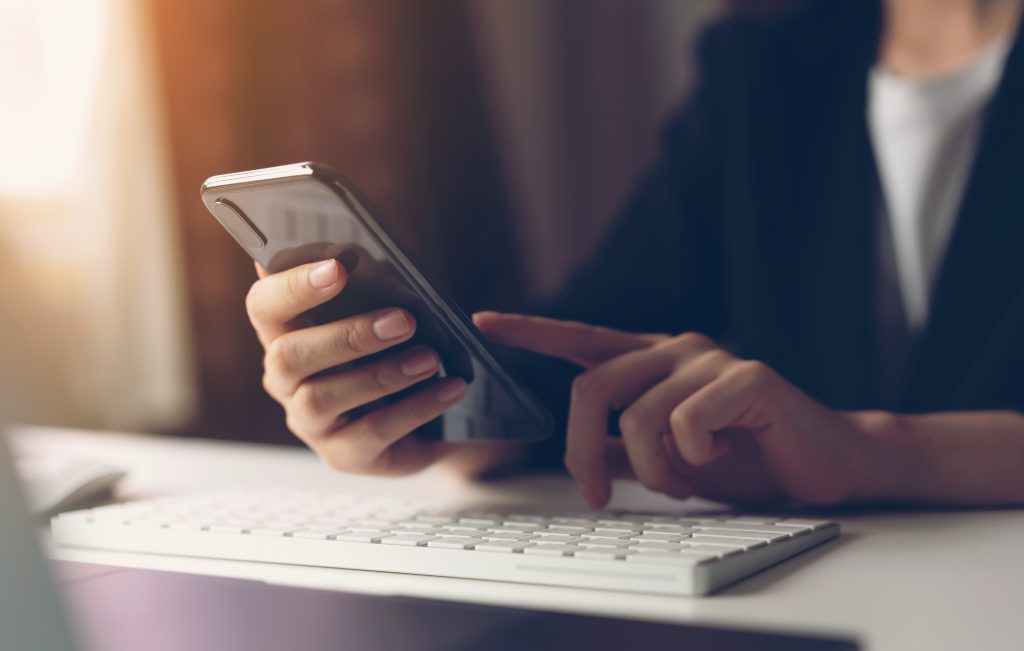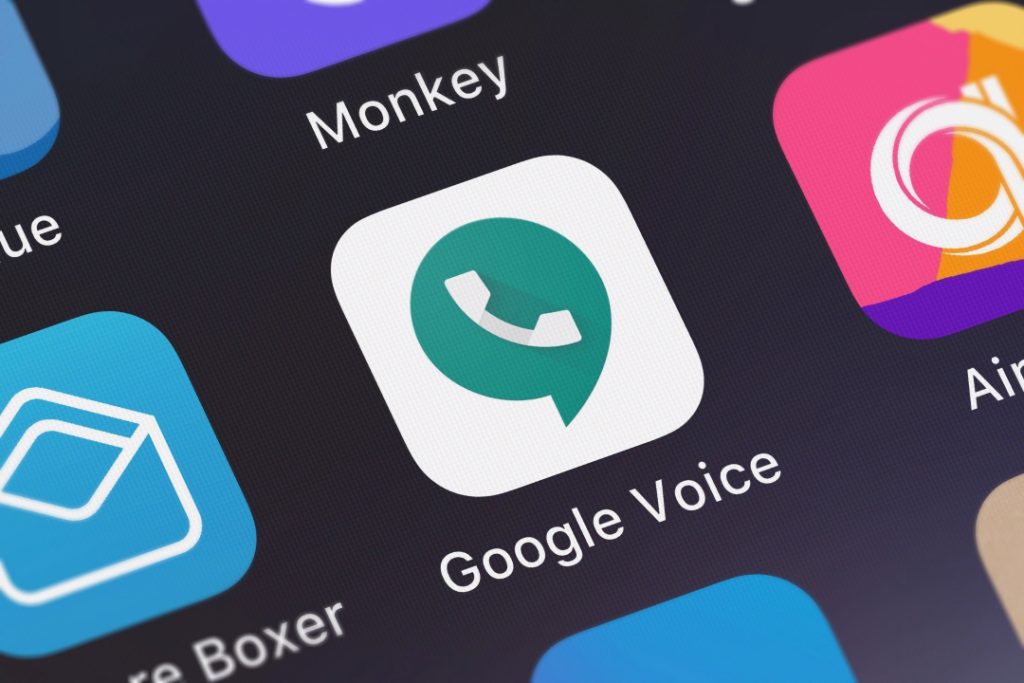Are you expecting a company to send you a verification code, but it didn’t actually end up being delivered to your phone?
This can be concerning, especially if it becomes a regular thing, or you experience the same issue multiple times.
So, why aren’t you getting verification codes sent to your phone, and what can be done to fix it?
In this article, I’ll be covering everything that you need to know – starting with some of the most common fixes, and then going over some of the not-so-common ones.
That way, we can get the issue resolved regardless of the type of phone that you use!
1. Check Your Phone’s Connection To Your Carrier’s Network

The first – and one of the most common reasons, is that your phone doesn’t have a great connection to your cellular network.
This can be the case even if you are able to get messages from other people, via iMessage (iPhone) or Google Messages (Android.)
Why?
Well, iMessage and Google Messages both internet-based, and do not require a connection to your cellular network at all in order to function, as long as they are connected to Wi-Fi.
Most verification codes that companies send out are done via SMS, however. This ensures compatibility with all cell phones – even older, non-smartphones that are still being used today.
So, it’s important that you have mobile data turned on, and that you have an adequate connection to your cellular provider’s network in order to receive verification codes.
A Wi-Fi connection alone is usually not enough.
Tip: If you live in a rural area and cell phone signal does not reach your home, consider signing up for a service like Google Voice – which gives you an additional number that can receive texts over Wi-Fi, for free!
2. Ensure Multiple Phone Numbers Aren’t Tied To The Account
This one is particularly common if you are using a family account, or a service in which multiple people log into.
For example, Amazon is one platform in which the OTP code doesn’t appear to be sent, and this is often the reason why.
If you have multiple phone numbers tied to the account, it’s possible that the one-time code may end up being sent to the other phone, rather than to yours.
Depending on the website, you have two options:
- In some cases, you may be able to have the verification code sent to the other phone. This may be hidden under a button that says ‘more options’ or ‘other ways to verify.
- You will need to ask the other person to tell you the code that they received.
In the case of the second one, it may be a good idea to change the default phone number to yours if you sign into the account more frequently, or remove the other phone number entirely if possible.
3. Avoid Using Free Texting Apps
If you are using a free texting app (like TextNow or TextFree) to receive messages, keep in mind that these may not work.
Many of these services block texts from five-digit phone numbers, and other automated services that are used to send verification codes and one-time passwords.
This is because these numbers are often recycled and cost money for the services to operate. So, even if they allowed it, using a free service can be dangerous to tie to your account, as it may open up security issues if the number is ever assigned to someone else.
Keep in mind however that some services will start allowing verification codes to come through if you sign up for their paid plans.
Still, it is best to avoid free texting apps for receiving verification codes, and opt for a cheap, prepaid phone if this is all you will use the number for.
4. Be Mindful Of Any Spam Blacklisting Software
If you are using any software that can automatically block texts from coming through, this is important to keep in mind!
This is more common on Android phones vs iPhones, but you should know if this one applies to you.
It’s possible that this software may be blocking the verification codes from ever reaching your inbox, even without you realizing it!
So, if your app supports it, consider seeing what messages have been blocked recently.
Alternatively, consider temporarily disabling the spam blocking software from running completely, and try having the code sent to you again.
5. If Using Google Voice, Manually Check The Website

In 2021, Google announced that they’d stop forwarding text messages received to Google Voice numbers, to the phone numbers tied to the account.
This means that if you are having the verification code sent to a Google Voice number, it will no longer be forwarded to your phone like it may have been in the past.
Therefore, you will need to manually check the Google Voice app or website in order to view any new messages that have been received.
While Google Voice has no problems receiving verification codes (unlike most free texting apps), it’s a good idea to turn notifications on for the Google Voice app, so you can be notified when a new message arrives.
6. Make Sure Your Inbox Isn’t Full
This one is mostly an issue on older, non-smartphones.
If your phone’s text inbox is full, then you won’t be able to receive any new messages until old ones have been deleted.
Therefore, you should make a habit of regularly clearing out text messages that you no longer need to keep, if your phone has any sort of limit.
Note that you’re unlikely to ever experience this issue if using an iPhone or an Android phone – or any modern smartphone, for that matter.
That being said, older phones are still being used by some people, so I wanted to mention this one.
7. Wait 10-15 Minutes, Then Try Again
If you’re having a problem with just one website, app or service sending you a verification code, it may be a good idea to simply wait.
Chances are, the platform is having a temporary issue sending out verification codes, that will resolve itself within 10 to 15 minutes.
Although these systems are automated and hiccups rarely occur, the fact of the matter is that every company experiences problems sometimes. It may just be that you were one of the unlucky people that affected by it.
It’s likely that the company is already aware of the problem, and is taking steps to fix it.
However, you may consider searching for the company on Twitter to see if they’ve posted anything about the issue. Sometimes, companies will turn to Twitter to acknowledge the problem and provide estimates when it will be fixed.
Additionally, you may also consider searching for the website on Downdetector.com to see if other people have reported that they’re having issues as well.
8. Contact Your Carrier
Finally, if you’ve tried every fix in this article that applies to you and the verification codes still aren’t coming through, it may be a good idea to contact your cellular provider.
If messages aren’t coming through, they will be the ones best equipped to fix the issue, as they will have far more information to figure out what is going wrong.
For reference, here are the support numbers of the four largest carriers in the United States:
AT&T: 1-800-331-0500
Verizon: 1-800-837-4966
T-Mobile: 1-800-937-8997
Sprint: 1-888-211-4727
While on the phone call, be sure to give specific examples of where you’re having problems.
If you have received verification codes in the past but suddenly stopped receiving them, you may wish to find the numbers that the old verification codes were sent from. That way, you can provide them to the carrier for them to look up in their systems.
Consider Switching To Authenticator Apps, If Available!
Did you know that there’s a better way to get your codes, then having them sent over SMS?
If the service you’re trying to sign into offers it, it’s generally far better to use an authenticator app like Google Authenticator, and receive your codes that way.
There’s a few reasons why:
First of all, if you have the iPhone or Android app downloaded onto your phone, you don’t even need to be connected to the internet in order to generate working codes.
So, if you’re experiencing connection issues – one of the most common reasons verification codes aren’t arriving, then an authenticator app will solve this.
Secondly, it’s far more secure.
When receiving messages via SMS, somebody could either read your message without requiring the phone to be unlocked (if this is the case for your messages), or they could take your SIM card, and temporarily place it inside their own phone to receive your texts.
This would allow someone with malicious intent to get into your accounts with the verification code sent to you.
Because authenticator apps require your phone to actually be unlocked – and they aren’t tied to your SIM card, it would be impossible for anyone else to find the codes without knowing your phone’s passcode.
Conclusion
If verification codes aren’t being sent to your phone, there is usually a simple explanation behind it.
Once you figure out what may be causing the issue, you can start taking steps towards fixing it, so you don’t experience this issue again in the future.
I hope that your verification code has managed to come through, and everything is working smoothly.
If you have any other questions or you run into trouble, let me know below and I’ll be happy to help.
Wishing you the best,
– James McAllister
